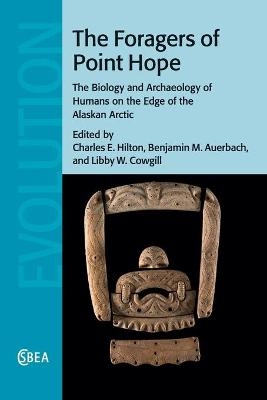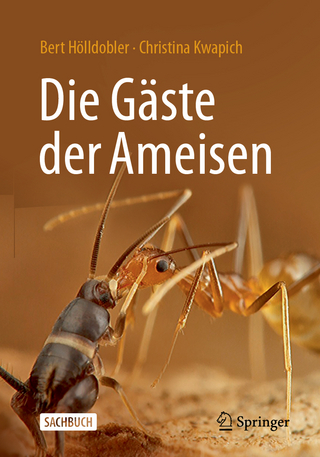
The Foragers of Point Hope
Cambridge University Press (Verlag)
978-1-108-82941-0 (ISBN)
On the edge of the Arctic Ocean, above the Arctic Circle, the prehistoric settlements at Point Hope, Alaska, represent a truly remarkable accomplishment in human biological and cultural adaptations. Presenting a set of anthropological analyses on the human skeletal remains and cultural material from the Ipiutak and Tigara archaeological sites, The Foragers of Point Hope sheds new light on the excavations from 1939–41, which provided one of the largest sets of combined biological and cultural materials of northern latitude peoples in the world. A range of material items indicated successful human foraging strategies in this harsh Arctic environment. They also yielded enigmatic artifacts indicative of complex human cultural life filled with dense ritual and artistic expression. These remnants of past human activity contribute to a crucial understanding of past foraging lifeways and offer important insights into the human condition at the extreme edges of the globe.
Charles E. Hilton is an Assistant Professor in the Department of Anthropology at Grinnell College, Iowa. As a biological anthropologist with a background in human skeletal biology, functional morphology, human evolutionary ecology, and epidemiology, his research focuses on how small-scale human groups, particularly foragers, develop and evolve both short- and long-term biological and cultural responses within environmental settings offering limited resources. Benjamin M. Auerbach is an Assistant Professor in the Department of Anthropology at the University of Tennessee, Knoxville. A functional anatomist, skeletal biologist and evolutionary biologist, he has spent fifteen years collecting osteometric and anthropometric data to document morphological variation among modern humans within the context of evolutionary forces. Libby W. Cowgill is an Assistant Professor in the Anthropology Department at the University of Missouri, Columbia. Her research interests include human growth, development, and functional morphology as well as Late Pleistocene human evolution. Her current research program explores the relationship between childhood behaviour and selection pressure and the formation of adult skeletal morphology.
List of contributors; Acknowledgements; Foreword; Preface; 1. Introduction: humans on the edge of the Alaskan Arctic Charles E. Hilton, Benjamin M. Auerbach and Libby W. Cowgill; Part I. Regional Archaeological and Biological Context: 2. The archaeology of north Alaska: Point Hope in context Anne M. Jensen; 3. The Ipiutak cult of Shamans and its warrior protectors: an archaeological context Owen K. Mason; 4. Ancestor-descendant affinities between the Ipiutak and Tigara at Point Hope, AK in the context of North American Arctic cranial variation Blaine Maley; Part II. Biological Variation among the Foragers of Point Hope: 5. Contrasting of the Ipiutak and Tigara: evidence from incisor microwear texture analysis Kristin L. Krueger; 6. The diets of the Ipiutak and Tigara (Point Hope, Alaska): evidence from occlusal molar microwear texture analysis Sireen El Zaatari; 7. Postcranial pathological lesions in precontact Ipiutak and Tigara skeletal remains of Point Hope, Alaska Charles E. Hilton, Marsha D. Ogilvie, Megan Latchaw Czarniecki and Sarah Gossett; 8. Bone strength and subsistence activities at Point Hope Laura L. Shackelford; 9. Postcranial growth and development of immature skeletons from Point Hope, Alaska Libby W. Cowgill; Part III. Contexts, Conclusions and Commentaries: 10. Morphologies from the edge: perspectives on biological variation among the Late Holocene inhabitants of the northwestern North American Arctic Benjamin M. Auerbach; 11. The Ipiutak spirit-scape: an archaeological phenomenon William W. Fitzhugh; 12. Point Hope in certain contexts: a comment Don E. Dumond; References; Index.
| Erscheinungsdatum | 06.07.2020 |
|---|---|
| Reihe/Serie | Cambridge Studies in Biological and Evolutionary Anthropology |
| Zusatzinfo | Worked examples or Exercises; 42 Halftones, unspecified; 42 Halftones, black and white; 7 Line drawings, black and white |
| Verlagsort | Cambridge |
| Sprache | englisch |
| Maße | 153 x 230 mm |
| Gewicht | 800 g |
| Themenwelt | Naturwissenschaften ► Biologie ► Humanbiologie |
| Sozialwissenschaften ► Ethnologie | |
| Sozialwissenschaften ► Soziologie | |
| ISBN-10 | 1-108-82941-4 / 1108829414 |
| ISBN-13 | 978-1-108-82941-0 / 9781108829410 |
| Zustand | Neuware |
| Informationen gemäß Produktsicherheitsverordnung (GPSR) | |
| Haben Sie eine Frage zum Produkt? |
aus dem Bereich


